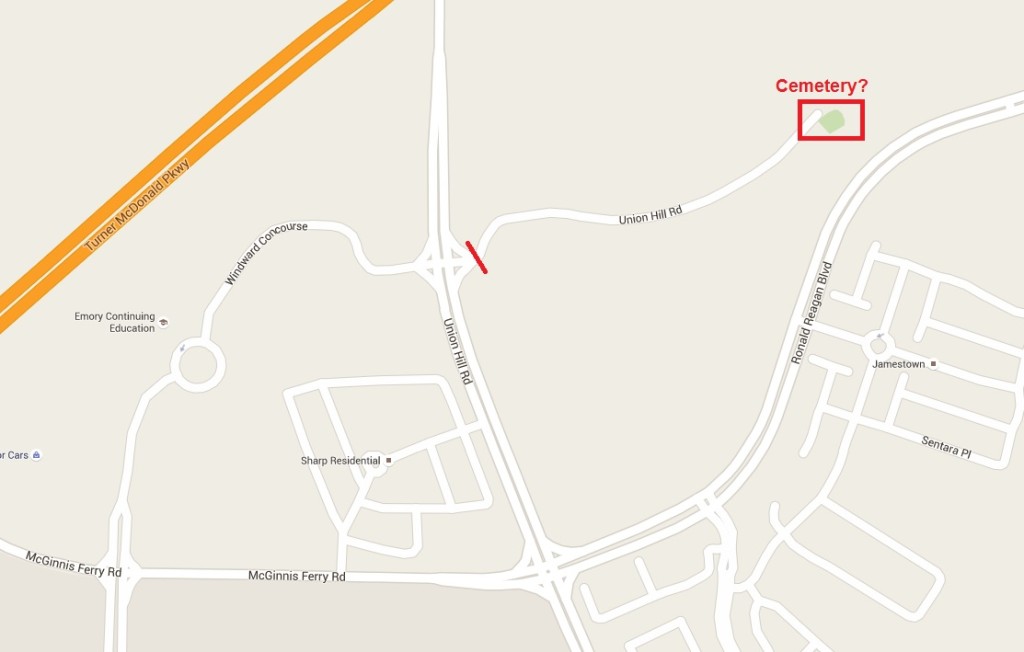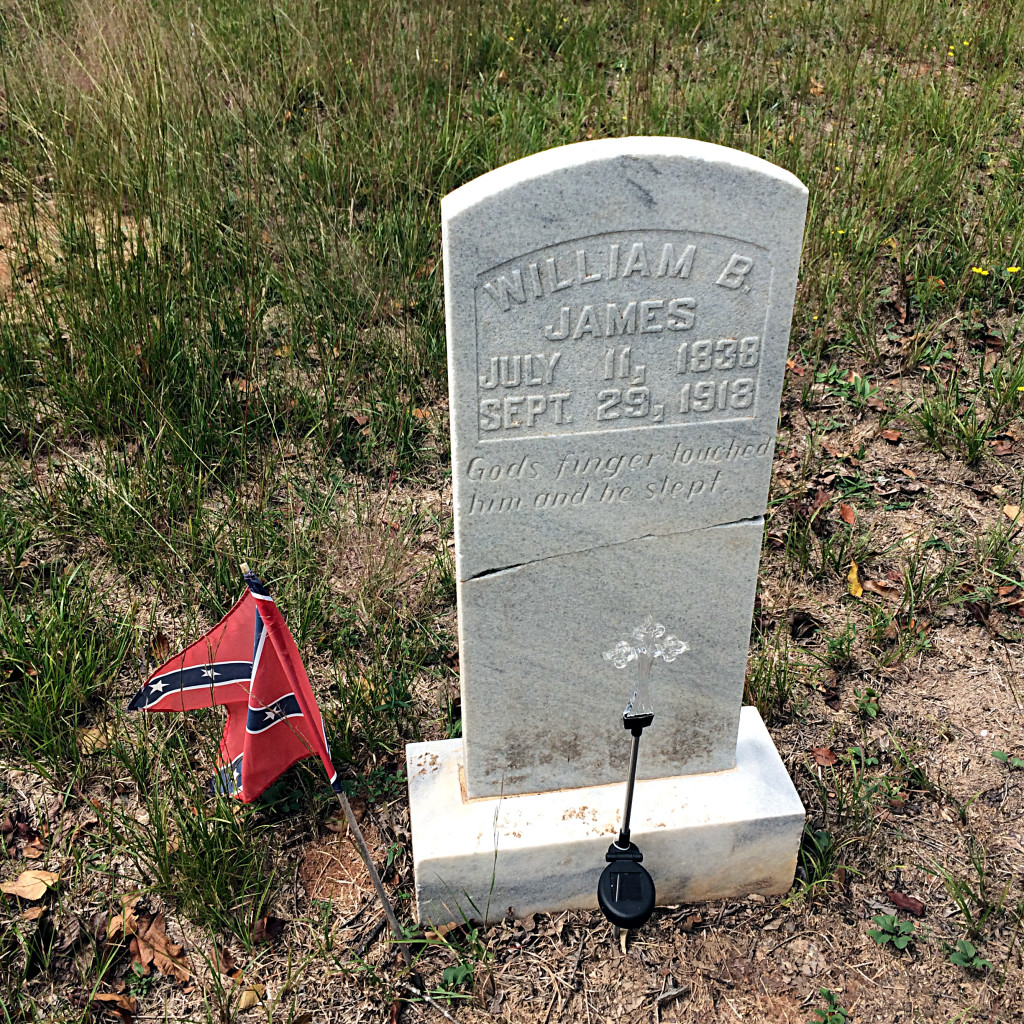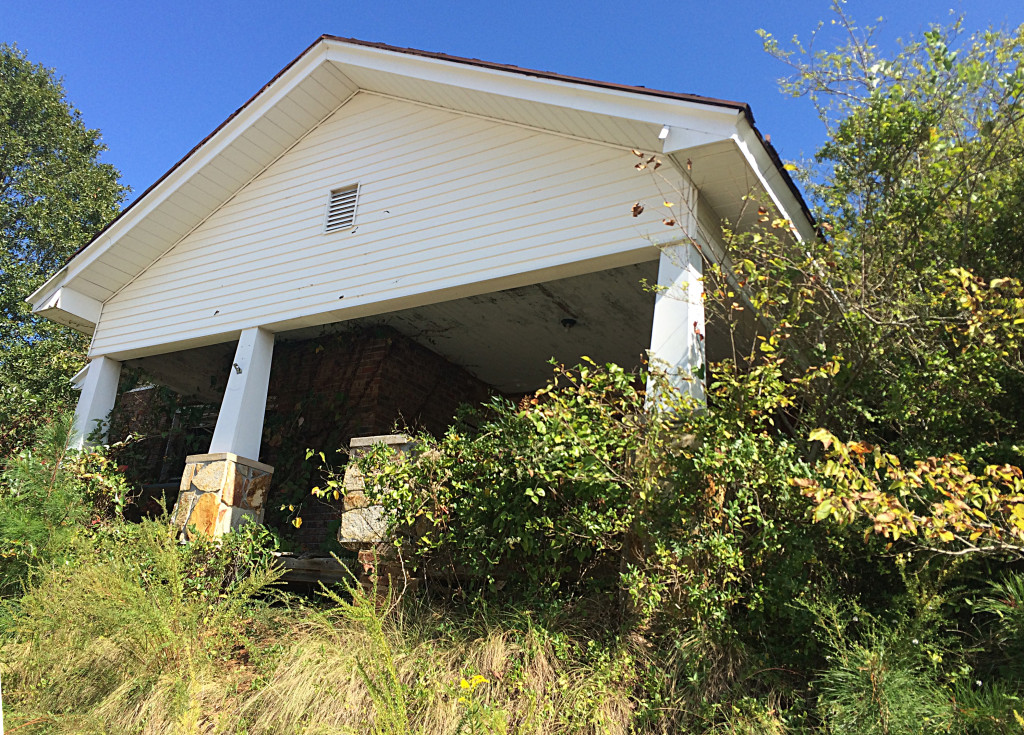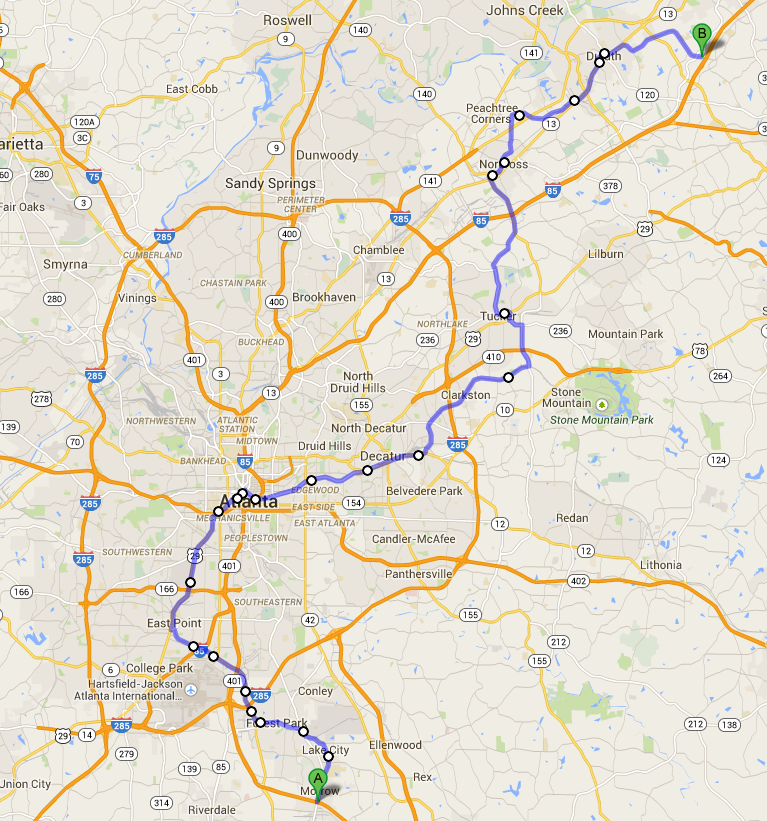Sometimes I use Ronald Reagan Blvd as an alternate to GA 400 between exits 11 and 12. This road goes through mostly vaporware developments – planned subdivisions, some of which don’t seem to have even started construction, others seem to have had some grading and nothing else. Lots of places where they put it in a turn off of the main road but it just dead-ends into a field. That sort of thing. This is literally where the streets have no name.
Recently I noticed, off to the west side of the road, what appeared to be a graveyard on a hill overlooking a construction zone. I decided to try to find it.
Now, on the map, it looks like you can get there via Union Hill Road:

But, where I drew that red line across the road, that’s where you find this gate:

So, clearly I’m not driving there. It was a nice day for a walk, though. You can of see some traces (as in the next photo, on the right path) that this road was once paved, but the pavement is very much going back to nature. Maybe it will someday again be paved. I hope not.

At the end of the road is another gate. This one has a “no trespassing” sign but the sign is facing the other way from where I came. I don’t know who they are trying to keep out from that direction.

Beyond the gate is the cemetery:

Most of the graves seem to belong to a James family, and on the topographical USGS map this is in fact marked as “James Cem”. The most recent date I saw was 1978, but they are mostly 19th century dates. Confederate flags are planted next to several that are Civil War era.


This graveyard clearly is still maintained, someone cuts the grass here and those flags look pretty new.
After this, I decided as a bonus to explore some nearby old houses back on the road.
This is all that’s visible from the street, and really gives no clue:

The inside of this building has some graffiti, but even that is dated from 2001!


Dig this chair!

The adjacent buildings here are nothing but frame. Only a little bit of siding remains, someone has removed the rest of it.
Now all the remains is the “bones”, facing out over the empty field.



All those new neighborhoods being built nearby, some of those people in those houses must have kids. I hope those kids run around unsupervised in these fields and these woods and ruins, trespassing and risking injury. One can dream.
Flickr Album of these photos
































